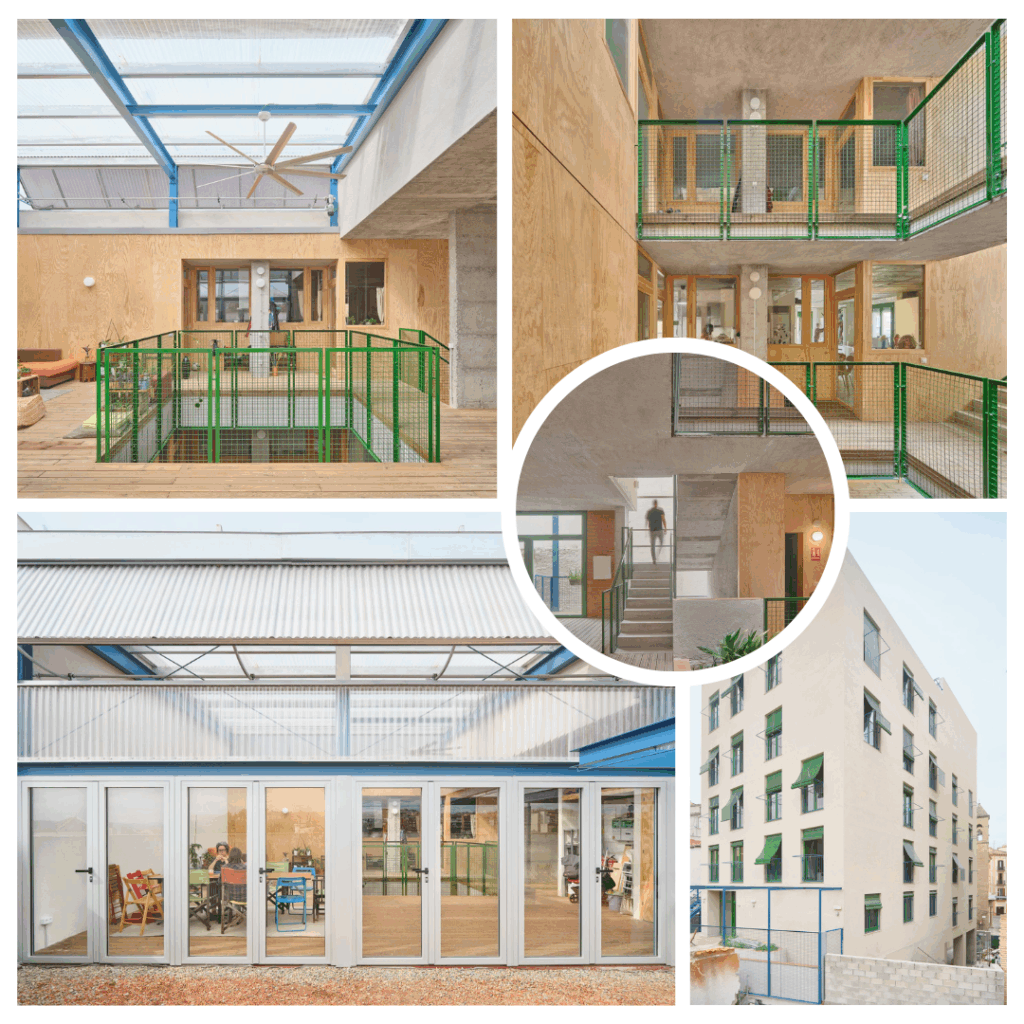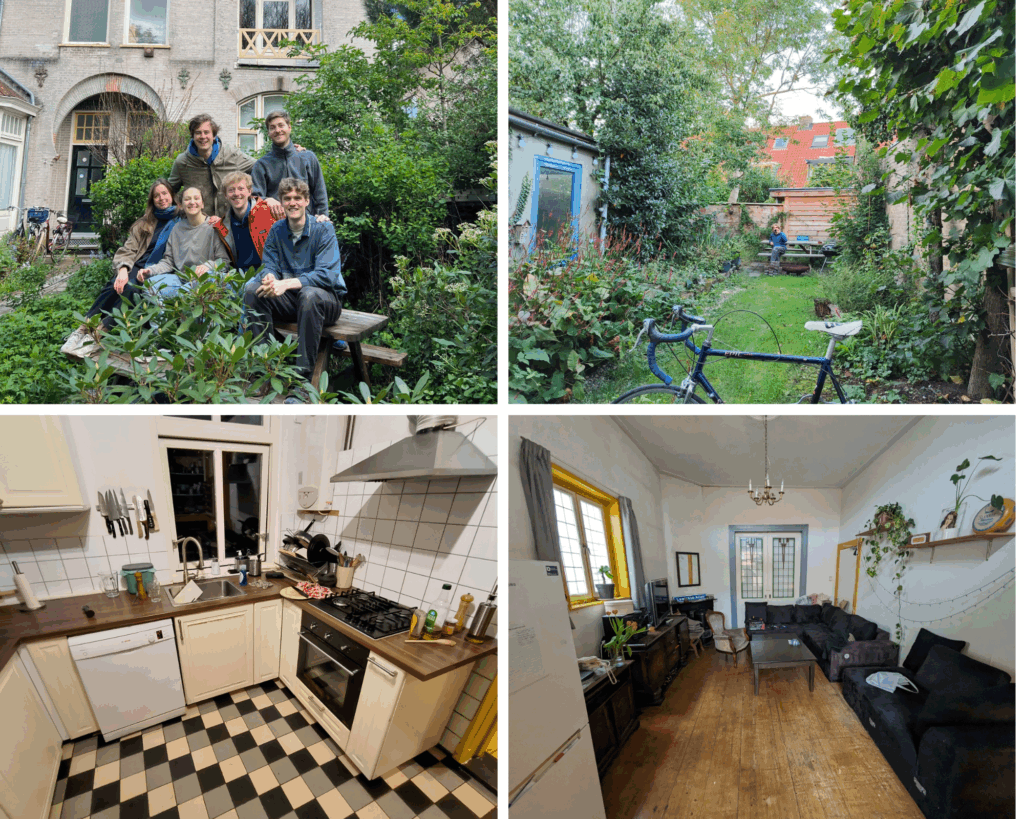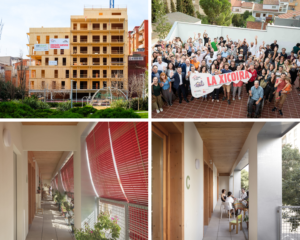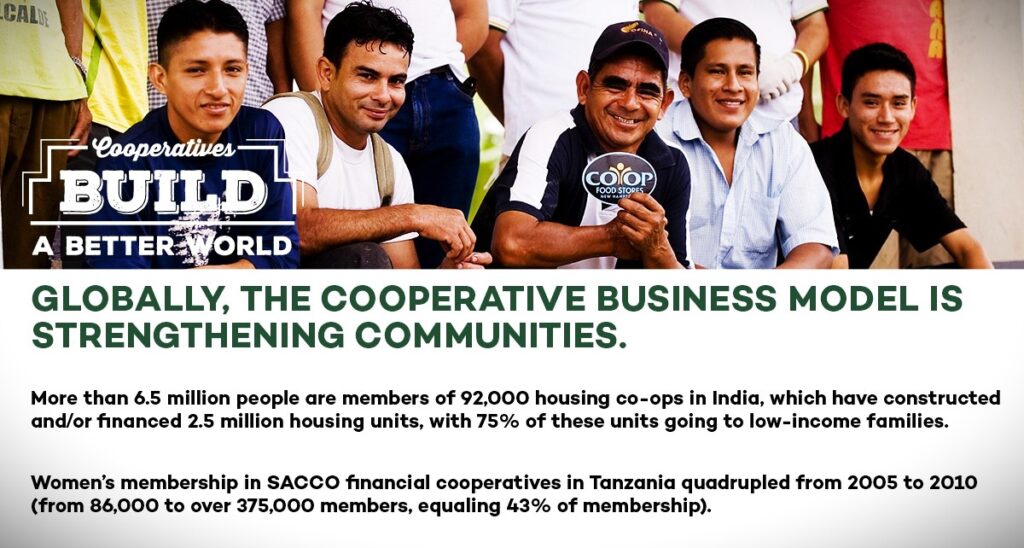International Year of Cooperatives

About the United Nation’s International Year of Cooperatives 2025 (IYC2025)
The United Nations has designated 2025 as the International Year of Cooperatives under the theme “Cooperatives Build a Better World.” This global initiative highlights the vital role cooperatives play in driving sustainable development, creating decent work opportunities, and strengthening economies.
Objectives of the IYC2025
The International Year of Cooperatives 2025 sheds light on the global impact and potential of cooperatives while encouraging support from governments, businesses, and civil society. It showcases successful cooperative models, drives policy discussions, and promotes practices that foster cooperative growth and sustainability.
Global Impact of Cooperatives
There are approximately 3 million cooperatives worldwide, representing at least 1.2 billion members. These cooperatives span diverse sectors, including agriculture, banking, consumer, energy, fisheries, health, housing, insurance, and industry & services.
Global Snapshot of Housing Cooperatives
Determining the exact number of housing cooperatives and their members globally is challenging due to variations in reporting and definitions across countries. However, housing cooperatives exist on all continents in various formats, including resident-owned and rental models. Visit our page on the various cooperative housing models.
For instance, in Germany, over 2,000 housing cooperatives are managing more than two million apartments and serving over three million members. (source). In the United States, Co-op City in the Bronx, New York, is home to more than 15,000 families in 35 buildings, making it the largest housing cooperative in the world.
Globally, cooperatives across all sectors have a significant presence, with about 3 million cooperatives varying by sector and type, and about 12% of the human population are members of a cooperative. However, specific global statistics for housing cooperatives alone are not readily available.
How Housing Cooperatives Build a Better World
Housing cooperatives put people before profit, ensuring secure, affordable homes for their members. They create stable, resilient communities by promoting long-term sustainability and responsible growth. Through shared ownership and participation, coops empower residents with a voice in decision-making and a stake in their community’s success.
By working together, housing cooperatives tackle challenges like affordability, economic security, and environmental sustainability, building stronger communities.
Follow us on social media (scroll to the bottom) and subscribe to our newsletter for more on #IYC2025.
Member Activities
Take a look at what our member, the Confederation of Co-operative Housing has planned for #IYC2025.
Best Practices

Call for Best Practices
As we celebrate the International Year of Cooperatives 2025 (#IYC25), Cooperative Housing International and urbaMonde join hands to showcase the most innovative, impactful, and inspiring practices in housing cooperatives from around the world!
Do you have a creative energy-efficient design, an innovative financial model, or a groundbreaking community initiative? Whether you’re a cooperative member, architect, staff, researcher, or student, we want to hear from you!
Share your ideas with us! Send a story, video, drawing, poem, or photos—anything that captures your housing cooperative’s creativity and success.
Complete this form to enter your story.
We’ll feature your stories on this page as well as on social media throughout #IYC25 to inspire and connect cooperative housing communities worldwide!
La Raval: A Cooperative Housing Model for Urban Revitalization in Manresa’s Historic District (Spain)

La Raval-Catalonia, Spain
A Community-Driven Project in a Neglected Urban Core
La Raval is a cooperative housing project in Manresa, Catalonia—one of the region’s most neglected historic centres. Designed by Lacol Arquitectura Cooperativa, the project promotes community living and urban regeneration through cooperative values and shared infrastructure. The building includes 18 housing units and introduces a new public passage that reconnects a main street with a nearby square, strengthening its ties to the neighbourhood.
Right-of-Use Model and Non-Speculative Principles
The cooperative operates under a right-of-use model, led by its members with support from La Dinamo Fundació. Built on municipally owned land awarded via a public competition, the project is the first of its kind in Manresa. It challenges the speculative housing market by centring collective needs, cooperative ownership, and long-term community stability. These values are reflected in the governance structure, financing model, and architectural design.
Participatory Design and Shared Infrastructure
Future residents participated from the outset, shaping the building’s priorities to balance private needs with communal life. As a result, shared spaces are prominently located to promote interaction and openness to the surrounding community. The ground floor features a multipurpose room accessible from the street, while the first floor includes a communal kitchen-dining area and an additional gathering space. At the rooftop level, a flexible-use area includes a laundry room and a panoramic terrace—providing a vertical counterpoint to the street-level commons.
Design for Connection and Adaptability
The building is organized around a small central courtyard that acts as both an architectural anchor and a passive climate system. Open staircases and wide landings visually and physically connect the units to shared spaces. Homes range from one to three bedrooms and are designed to evolve with changing household needs. Each is accessed through the kitchen, which opens onto the courtyard via large windows—blurring the boundary between private and communal space.
Sustainability at the Core
La Raval integrates sustainability through passive design. The central courtyard buffers the building’s climate: acting as a greenhouse in winter and a cooling void in summer through ventilation and shading. Natural airflow and cross-ventilation reduce reliance on mechanical systems and lower energy use. These features make environmental performance an everyday part of the residents’ experience.
More Than Housing
La Raval exemplifies how cooperative housing can drive both social resilience and urban renewal. It offers not just affordable homes but also a model of living rooted in solidarity, sustainability, and shared responsibility. By embedding these principles into every aspect of its design and governance, La Raval provides a compelling alternative to the conventional housing market.
Living & Learning in a Housing Co-op: A Dutch Student’s Experience

Finding More Than a Home
When Jori Lamboo moved into Coöperatieve Woonvereniging LA26 in Wageningen, Netherlands, he didn’t just find a place to live—he joined a community that believes in taking housing into its own hands. Founded in 1978, the co-op was established by residents who bought the building together and have managed it collectively ever since.
Living Collectively, Learning by Doing
At LA26, maintenance is a shared responsibility. From fixing appliances to repainting common areas, residents take care of everything themselves. For Jori, this hands-on approach was eye-opening—it reshaped his understanding of home maintenance, building materials, and personal responsibility.
Rent Based on Reality
One of the co-op’s core practices is financial transparency. Every year, members come together to set their own rent, based strictly on real costs. It’s a practical lesson in budgeting and a clear alternative to rent structures that often feel arbitrary or opaque.
More Than Practical Skills
What Jori found most meaningful was the sense of shared purpose. Living among people committed to cooperation, mutual learning, and collective responsibility created an experience that went beyond housing—it became a way of life.
A Model for Young People
Jori’s story illustrates how housing can become a space for learning and growth. For students and young adults, co-ops like LA26 offer more than just affordable shelter—they provide real-world skills, empowerment, and a genuine sense of community.
Tomasz Marzec: Navigating the Complex Landscape of Polish Housing Cooperatives

A Longstanding Cooperative Tradition
Tomasz Marzec is an active member of a housing cooperative in Poland, a country where housing co-ops have deep historical roots. Originating under previous political systems, these cooperatives have evolved into large, complex organizations—some with hundreds of thousands of members.
Strengths and Challenges of Scale
While their size brings challenges such as bureaucracy and financial complexity, Polish housing cooperatives continue to offer stable, well-maintained homes to many. Residents benefit from features like well-insulated buildings, efficient renovation procedures, and access to green communal spaces—all of which contribute to a high quality of life.
A Changing Landscape
The cooperative housing sector in Poland is gradually shifting. New, grassroots housing co-ops remain rare, but some established cooperatives are actively expanding—developing new homes and offering apartments at below-market prices. Meanwhile, ongoing debates around governance, transparency, and member engagement are influencing how cooperatives evolve.
A Member’s Perspective
Tomasz offers a balanced view of the cooperative model’s strengths and limitations. His experience reflects a broader reality: that these housing communities must continue to adapt and innovate if they’re to meet the needs of future generations.
About Tomasz
Tomasz Marzec is a lawyer and PhD candidate specializing in energy cooperatives at Adam Mickiewicz University in Poznań, Poland. Furthermore, Tomasz is one of the analysts working on CHI’s International Legal Research Analysis Initiative. This project is a comparative analysis of cooperative housing law from 20 countries.
Sostre Cívic: Pioneering Cooperative Housing in Catalonia, Spain

Sostre Cívic is transforming housing in Catalonia with its right-of-use model—providing non-speculative, community-managed homes that stay affordable for generations. Instead of buying or renting individually, members collectively co-own and manage their housing cooperative, paying below-market fees while ensuring long-term stability. This system prevents speculation and ensures housing remains accessible for future generations.
Established in 2004, it has grown into the largest cooperative of its kind in the region, with over 550 homes under management and 350 more in development.
Sustainable & Community-Focused
Sostre Cívic prioritizes sustainability and community building. Many of its projects integrate energy-efficient construction, renewable energy sources, and participatory decision-making. The cooperative has also adapted abandoned or underutilized buildings, transforming them into vibrant housing communities while reducing urban waste.
Innovating with Public Partnerships
A key innovation in Sostre Cívic’s approach is its collaboration with public institutions. Through agreements with municipalities, it develops cooperative housing on publicly owned land under long-term leases (right of surface). This model allows for the expansion of social housing without privatization, reinforcing the role of collective ownership in urban development.
Leading Policy Change
Sostre Cívic has played a crucial role in advocating for cooperative housing at a policy level, contributing to the recognition of the right-of-use model in Catalonia’s legal framework. Its projects have inspired similar initiatives across Spain, demonstrating that cooperative housing is a scalable, sustainable, and socially just alternative to traditional real estate.
By fostering a culture of shared responsibility and community participation, Sostre Cívic is redefining access to housing. Its model proves that homes can be built on values, not just market principles.


